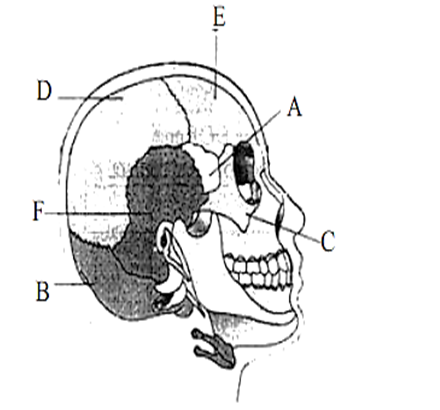 Multiple Choice Questions
Multiple Choice QuestionsThe sliding filament theory of muscle contraction was proposed by
A.F. Huxley and A.P. Pullman
A.F. Huxley and H.E. Huxley
B. Pullman and A.F. Huxley
A. Pullman and E. Pullman
Achilles tendon is associated with :
gluteus muscle
hamstring muscle
quadriceps muscle
gastrocnemius muscle
Sigmoid notch is formed by :
cavity formed by humerus
cavity formed by radio ulna
cavity formed by tibia fibula
cavity formed by femur
Assertion : Among the land animals, the Cheetah can run fastest over the ground.
Reason : The Cheetah uses its powerful forelimbs to push itself forward during running.
If both Assertion and Reason are true and Reason is the correct explantion of Assertion
If both Assertion and Reason are true and Reason is not the correct explanation of Assertion
If Assertion is true but Reason is false
If Assertion is false but Reason is true.
Assertion : Rheumatoid arthritis is an inflammation of the synovial membrane in synovial joints.
Reason : Infectious arthritis mostly occurs due to bacterial and viral infection.
If both Assertion and Reason are true and Reason is the correct explantion of Assertion
If both Assertion and Reason are true and Reason is not the correct explanation of Assertion
If Assertion is true but Reason is false
If Assertion is false but Reason is true
The striated appearance of a myofibril is due to the distribution pattern of
actin and myosin
fascicles
troponin
meromyosin
meromyosin
Label the pans marked in the human skull and select the correct option

A - Temporal bone; B - Parietal bone; C - Sphenoid bone; D - Frontal bone; E - Zygomatic bone; F - Occipital bone
A - Frontal bone; B - Zygomatic bone; C - Occipital bone; D - Sphenoid bone; E - Parietal bone; F - Temporal bone
A - Sphenoid bone; B - Occipital bone; C - Zygomatic bone; D - Parietal bone; E - Frontal bone; F - Temporal bone
A - Sphenoid bone; B - Zygomatic bone; C - Occipital bone; D - Frontal bone; E - Temporal bone; F - Parietal bone
A - Sphenoid bone; B - Zygomatic bone; C - Occipital bone; D - Frontal bone; E - Temporal bone; F - Parietal bone
C.
A - Sphenoid bone; B - Occipital bone; C - Zygomatic bone; D - Parietal bone; E - Frontal bone; F - Temporal bone
In the above figure,
A - Sphenoid bone: It is an unpaired bone of the neurocranium.
B - Occipital bone: It is the trapezoidal shaped bone found at the lower back area of the cranium.
C - Zygomatic bone: These are the two facial bones that form the cheeks and the lateral walls of the orbits.
D - Parietal bone: These are the two bones in the skull which, when joined together at a fibrous joint, form the sides and roof of the cranium.
E - Frontal bone: It is a bone in human skull. It makes up the bony part of the forehead.
F - Temporal bone: It is found at the sides and base of the skull. It consists of 5 parts.
The 'U' shaped bone present at the base of the buccal cavity is
Maleus
Ethmoid
Zygomatic
Hyoid
Hyoid
